Converting prospects: Acquire customers from your current, engaged prospect base (and save your ad spend!)
In today's competitive marketplace, it’s not enough to have a great product or service; you also need to have a solid strategy for acquiring new customers. Acquisition campaigns are the first interaction a prospective customer will have with your brand. This initial interaction will determine whether or not they’ll spend money and make a purchase (and hopefully keep making purchases!).
But, how do you make sure you’re targeting the right prospects? Using Lexer you can nurture and convert prospects in the Hub based on website browsing behavior or email engagement data, to target your engaged prospects, without having to rely on transactional data (which you don’t have for these profiles, yet). The benefit of focusing on your engaged prospects is that you’re making the absolute most out of your ad spend, as these prospects are more likely to convert if they’re already interacting with your brand.
In this article, we’ll walk through two examples of how you can convert your engaged prospects. One using Lexer Javascript Tag data, and the other using email engagement data.
Before you get started, if you need a refresher on Lexer’s Javascript Tag and how it works, we have some great articles here. We also have information on our standard email engagement data here too.
But, let’s get into it!
Using Lexer’s Javascript Tag to engage and convert prospects
Lexer’s Javascript Tag is a great tool to use when you want to personalize your communication to prospects based on their website browsing behavior.
For example, you can identify prospects who have recently browsed your website, but are yet to make any purchases.
To create this segment, firstly, navigate to Understand > Segment, then to the PROFILES MUST HAVE ALL OF THESE section of the Segment Builder, add the following attribute:
- Date of Last Visit > In the Last > 30 days
Then, to the BUT NOT HAVE ANY OF THESE section of the builder, drag and drop the following attribute:
- Total Orders > Greater than or equal to > 1
What this query is looking for is any one who has browsed your website in the last 30-days, but hasn’t made any purchases.
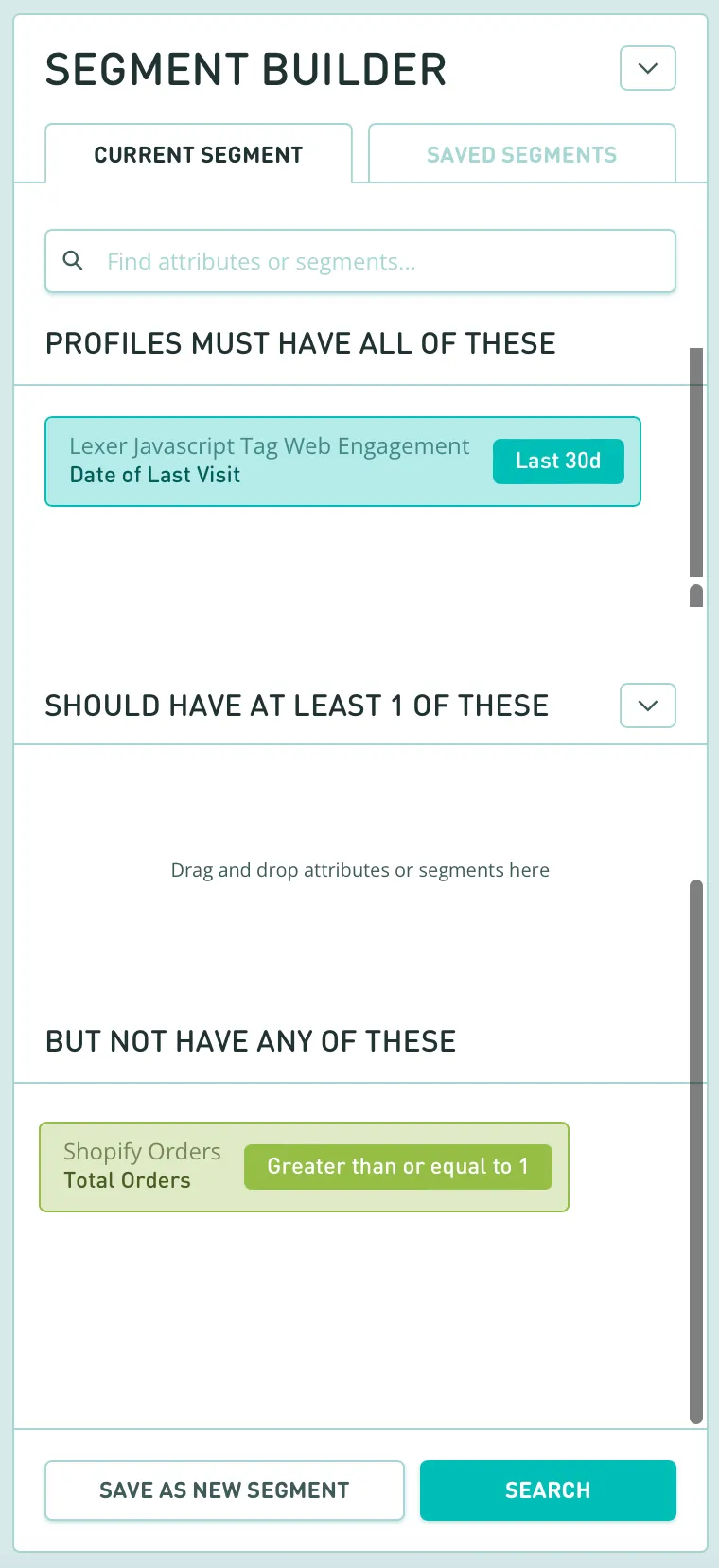
Hit Search, and you can Save this segment.
Now, let’s find out a little more about these profiles. For example, you can see which categories they browsed when they were on your website.
To do this, move to the right of the page and under EXPLORE ATTRIBUTES scroll down until you reach your Web Engagement attributes.
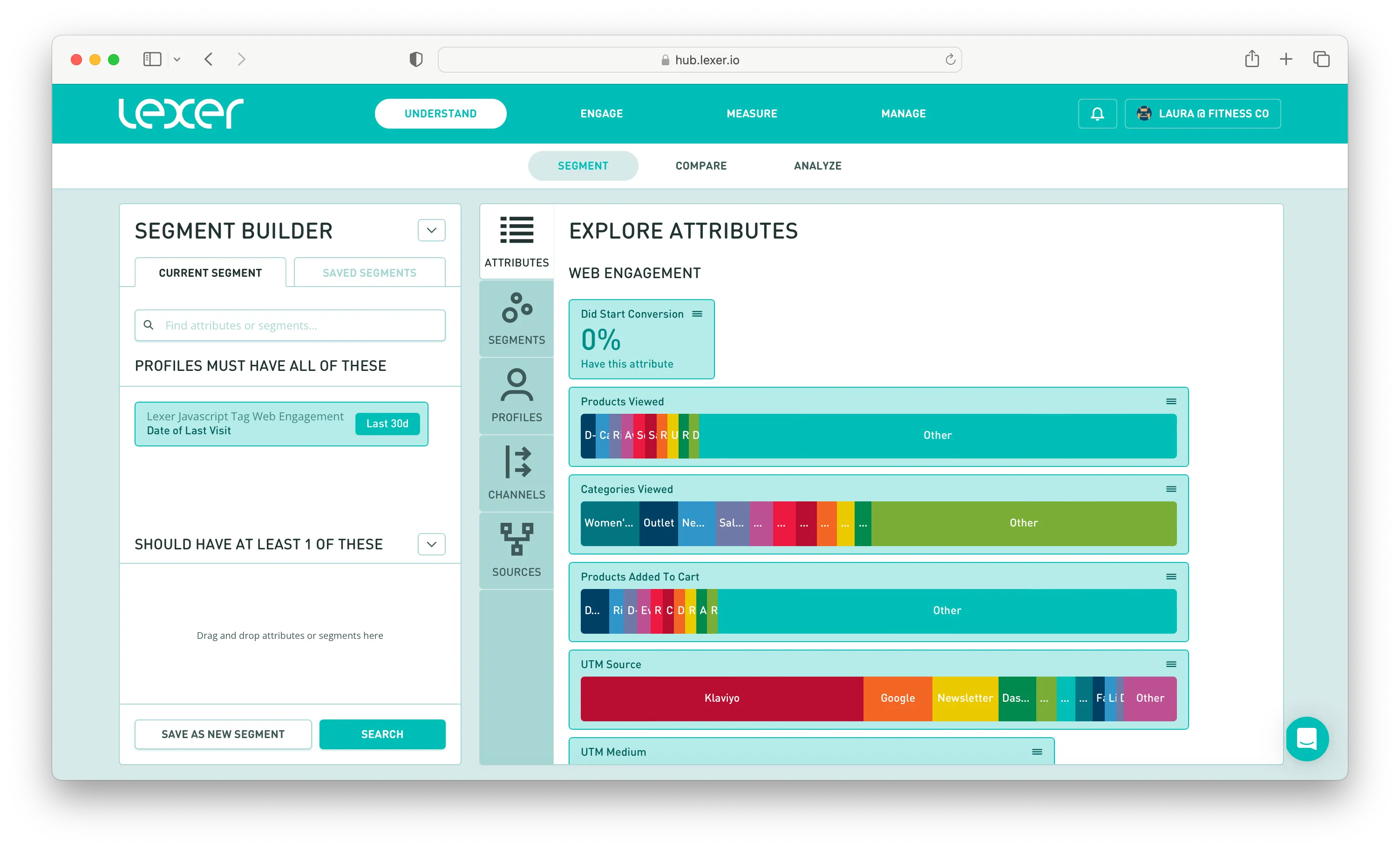
You can then click into the Products Viewed attribute to see what these prospects have been looking at on your website. In this example (screenshot below) we can see that Women’s Clothing and Accessories is the most popular category.
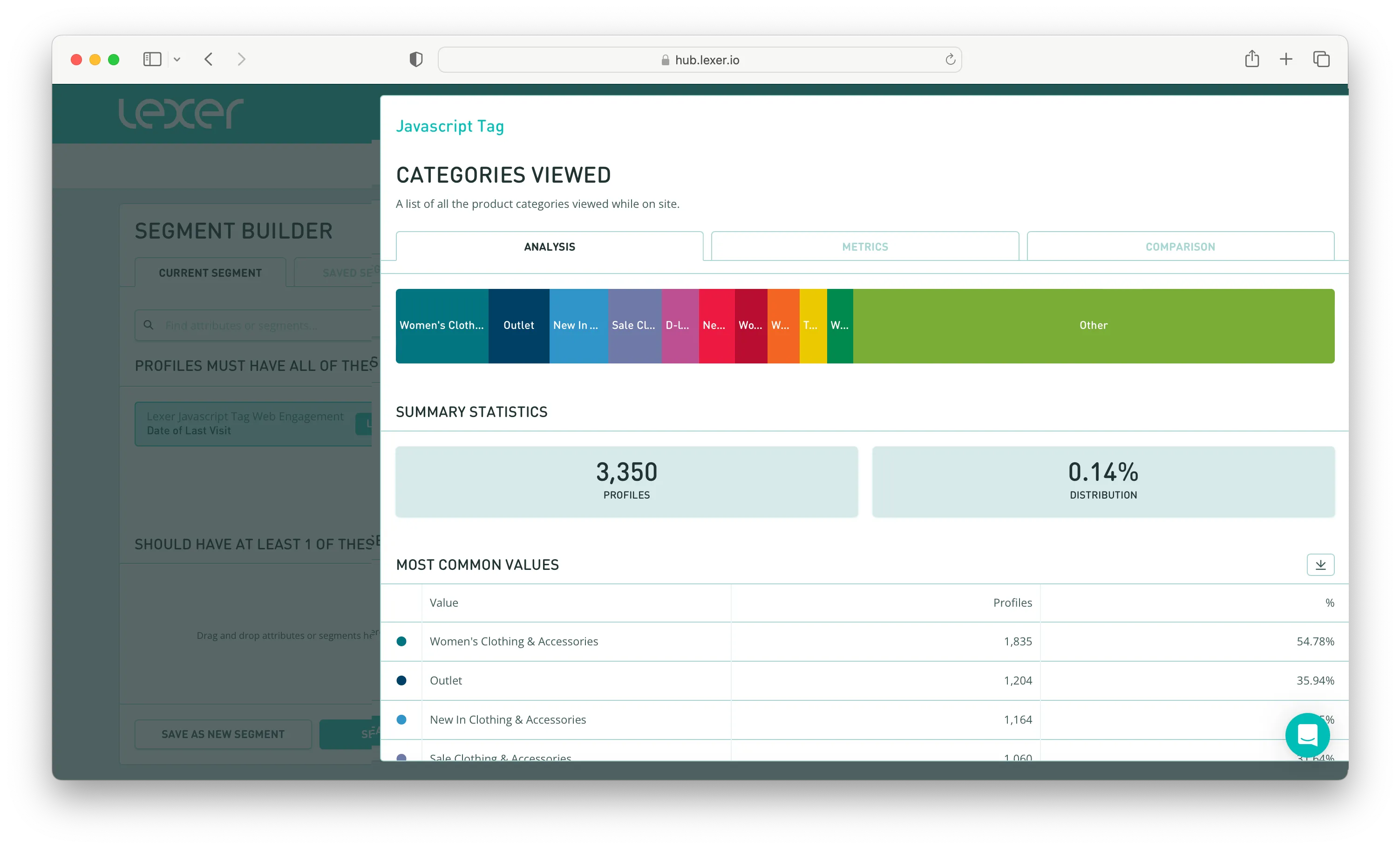
From here, you could create a segment of prospects who have browsed this category. Simpy add the Categories Viewed attribute to your original segment and filter for Women’s Clothing and Accessories.

You can then Save this segment, and use it in your activations.
For example, you could send these profiles relevant reviews, testimonials, or blog articles based on their browsing behavior and what they’ve been looking at. If you can engage and show them content relevant to their interests, then they’re more likely to convert.
If you wanted, you could even take it a step further and create some metrics associated with this new segment, and set up a Track dashboard to measure conversions. For more information, see our Track video overview here.
Using email engagement data to engage and convert prospects
We’ve seen how you can use Lexer’s Javascript Tag to engage and convert prospects, but if you don’t have this set up in your Hub then you can also use your email engagement data to identify who your most engaged prospects are and target them for your acquisition strategies to drive conversion.
For example, you can identify profiles who have recently subscribed to your emails in the last 14 days, but haven’t made a purchase.
Head back to the Segment Builder and then add the following attribute to the PROFILES MUST HAVE ALL OF THESE section of the builder:
- Email Subscribe Date > In the Last > 14 days
Then drag and drop the following attributes to the BUT NOT HAVE ANY OF THESE section of the builder:
- Total Orders > Greater than or equal to > 1
- Last Email Open > In the Last > 14 days
- Last Email Click > In the Last > 14 days

What this query is looking for is profiles who have signed up to email but haven’t engaged in any other way, and haven’t made a purchase.
Now hit Search, and you can Save this segment too.
You can target these profiles with your best hero products to encourage conversion, or see what other first-time buyers are purchasing and spotlight these products in your creative.
But you can also build on this segment and identify prospects with high (and recent) email engagement, to target and drive conversion.

Using Tag data and email engagement data, together!
One great little tip is that you can combine the Lexer Javascript Tag segment you built earlier in this article with the email engagement segment you also built, to target prospects who have viewed your website, and subscribed, but are yet to make a purchase.
Simply search for these saved segments in the Segment Builder, and add them to the PROFILES MUST HAVE ALL OF THESE section of the builder.
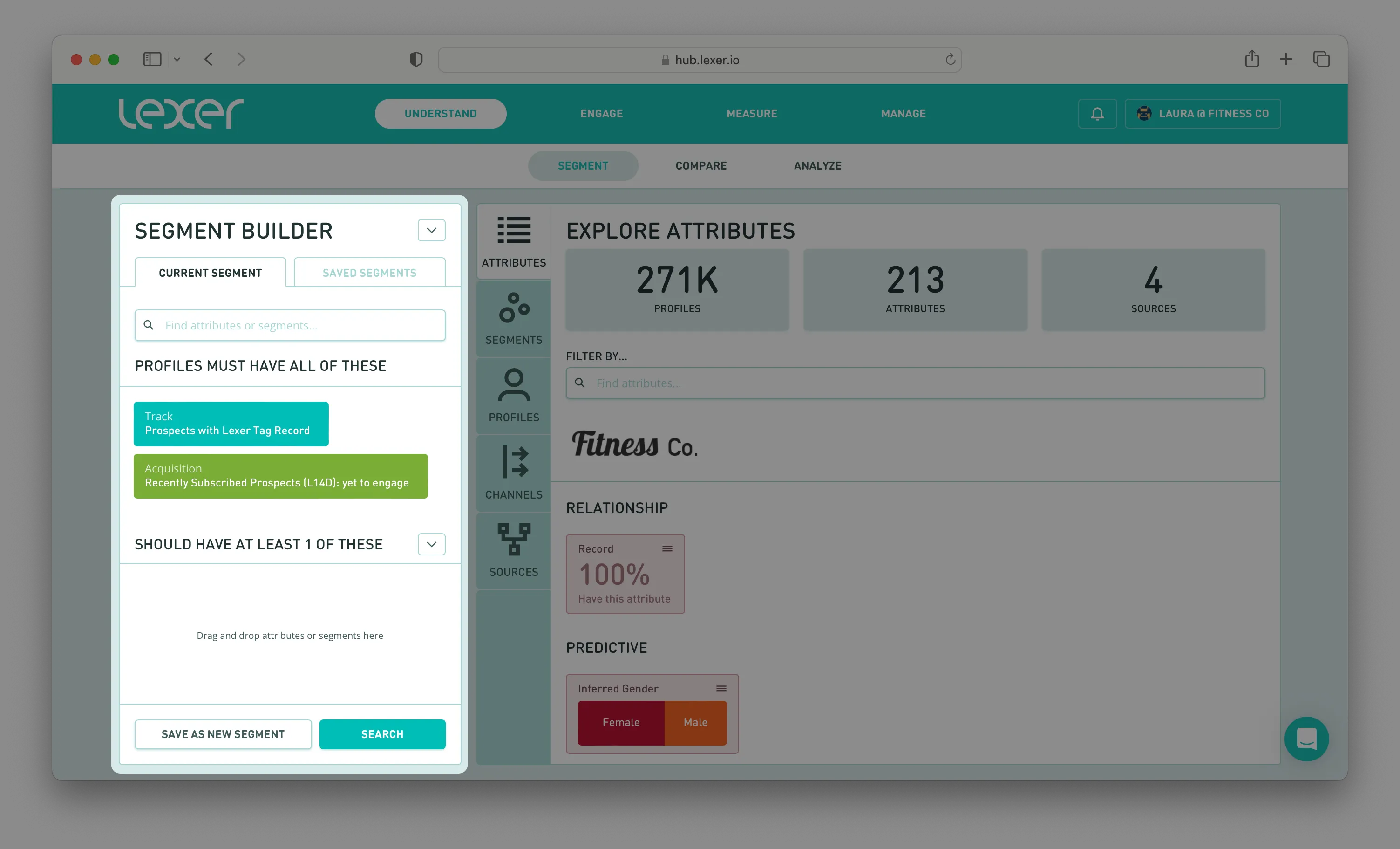
Hit Search, and then Save as a new segment.
From prospect to customer
Now that you’ve identified your engaged prospects, and sent them your acquisition campaign messaging, you can also track whether they made a purchase and became a customer.
First, you need to create a segment of prospects who have been sent an acquisition campaign.
To do so, navigate to Understand > Segment and then to the PROFILES MUST HAVE ALL OF THESE section of the builder, add the following attribute: Included in Audience. This attribute allows you to search for profiles in your CDP who have been included in a specific audience in Activate (and you can find more information on Activate here).
In this example you want to find all customers who have been activated to one of your acquisition campaigns, so use the activation name as the filter.
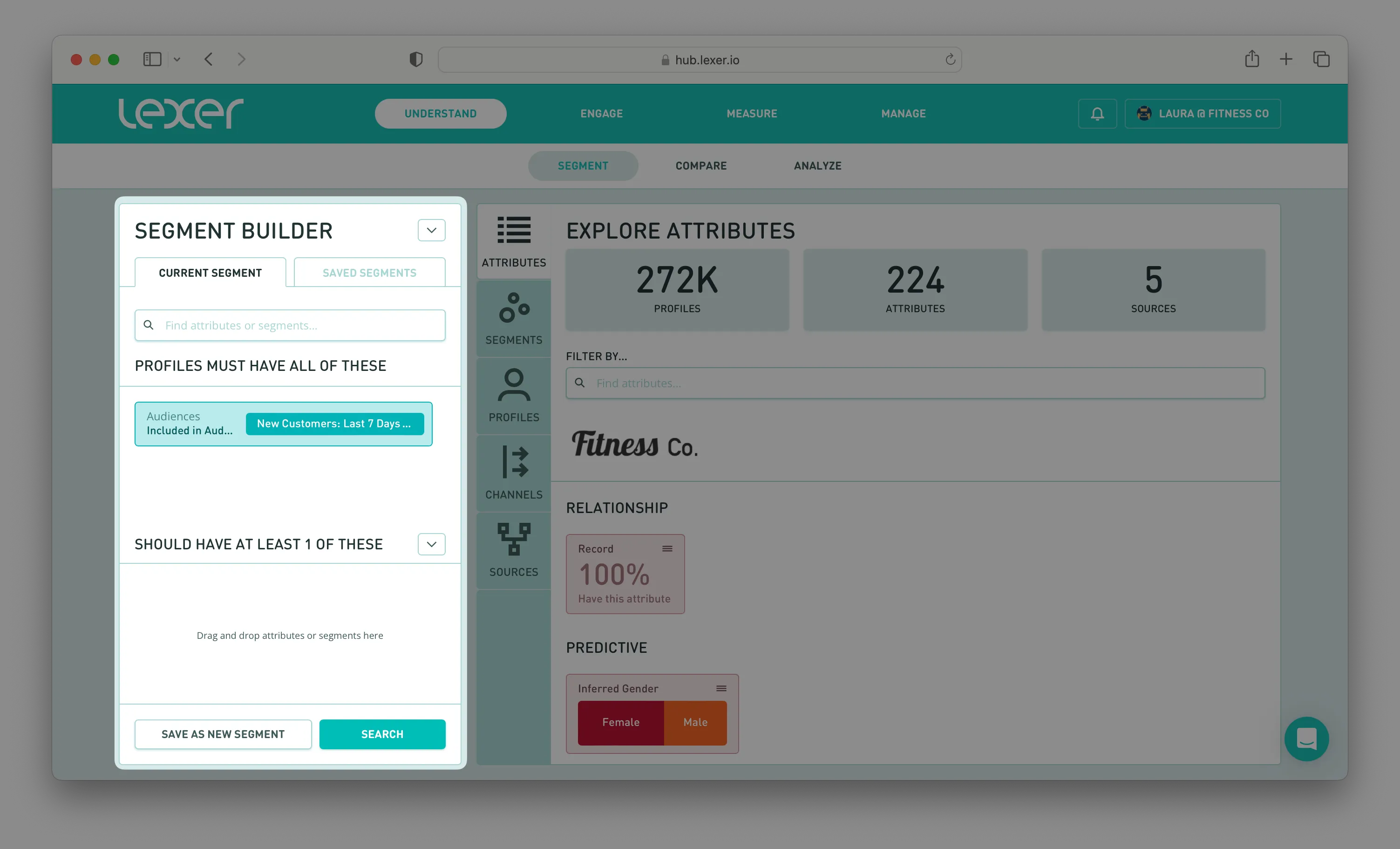
Hit Search and then Save this segment.
Now you can set up some metrics to see which of your prospects actually converted. We have some information on how to set up metrics and add them to a Track dashboard to measure conversion here.
One key metric to track would be Total Orders, as this will show you how many prospects actually made a purchase after they were sent your campaign.
Finally, once they’ve converted, turn them into a repeat customer. We have some more information on what this journey can look like, using Lexer, here.
Unlocking success and converting your engaged prospects
Converting prospects is an important outcome for any successful acquisition strategy. It requires a deep understanding of your current, engaged prospects, and by using Lexer to develop this personalized approach, building trust, and providing value, you can convert prospects into loyal customers.
Remember to track and analyze your campaign results as well, so you can optimize your strategies and adjust your approach as needed. With persistence and the right tactics, you can effectively convert prospects and grow your business.
Have a go at building and activating these segments in your own Hub, and if you have any questions, please reach out to your Success Manager or Lexer Support.

